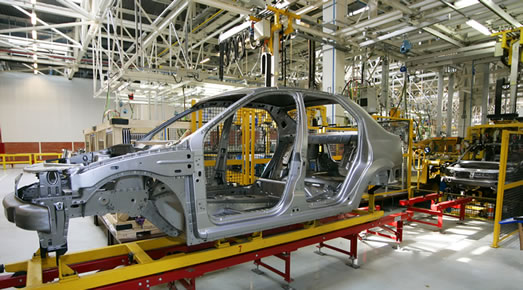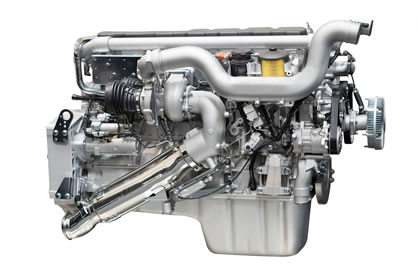“With the rapid changes of the global and regional economy, which is being affected by changes in the balance of political and economic power among the major global powers, every country needs to give importance to increasing their ability to compete. This has led to increased regional cooperation in order to build strength and increase power in trade negotiations. The ASEAN region is a new economic cooperation that will occur in the near future. Other than having an important role in pushing forward this regional cooperation, Thailand is also a regional leader in manufacturing and exporting a variety of industrial products. This last year the country has managed to produce more than 2.4 million vehicles, which has led Thailand to be one of the top ten utomotive producers in the world. Automotive parts and computer equipment and parts were also important export products over the last year. However, there were a ariety of both internal and external events that had a large effect on the industrial sector.
 The World’s Fuzzy Economy Resumes
The World’s Fuzzy Economy Resumes
The year 2012 is considered as a year that featured a number of important events, such as political changes that had somewhat of an effect on the major economies such as in the USA, Japan and South Korea. The World Bank has concluded that of the global economy in the past year grew at a rate of 3%. The World Bank and other economists are in agreement that the growth of the economy in Asia, especially China and ASEAN, will be an important force in driving the global economy. China will likely grow at around 7-8% and ASEAN will be able to grow at between 4-8%. What is important is that many countries in this area have potential in both being a production base and large consumer market, such as the CLMV group, which will become an important production base for labor-intensive industries such as textiles and apparel. As for the risk factors for the global economy, there is still the ongoing debt crisis in Europe, which will have a negative long-term effect. Economists are worried that if Europe cannot solve this problem, which is considered as the most serious ever economic crisis, this may cause Europe to enter into a long recession and may cause the collapse of the European Union. In terms of the United States, which is the world’s largest economy, it has been seeing signs of recovery, which can be seen in important economic data such as real estate demand and unemployment figures. Japan, the industrial powerhouse, in both last year and this year has been in a recession. China, which is Thailand’s biggest export market, will still deliver good growth of more than 7%.
Thailand’s Investment
For Thailand in the past year it was considered that the country was able to satisfactorily sustain itself with GDP growth of around 4.5%, although the export sector only expanded by 2.6%, which is a result of the manufacturing sector just recovering from the floods in the second half of 2012. In relation to foreign investment in the previous year, it has been found that requests for investment promotion in 2012 reached 2,582 projects, with a total investment of over 1,464,200 million baht,which is the highest amount in Thailand’s history. This represents a significant increase from 2011, when the total investment value was 634,200 million baht. 2012’s investment came from 790 projects in the services and public utilities sector, followed by the automotive sectors, the machine parts sector, and the electronics and electrical appliance industry. Thailand’s Board of Investment (BOI) has said that this reflects the confidence of investors in the potential and strong economic foundations of Thailand as an investment destination and as the center of the ASEAN region.
 Automotive Getting Ever Stronger Thailand has seen continuous growth in the automotive industry. In 2012 total output reached 2.4 million units, which is a large increase when compared to 2010 and 2011, which had a respective automotive output of 1.64 and 1.47 million units. In November 2012, more than 256,000 units were produced, which is the highest automotive output in Thai history. An important factor in the increased output, other than the demand left over from the flood period, was the first car program of the government, which experienced a total uptake of up to 1.3 million units, which caused other related industries such as metal products, plastic, rubber and electronics to experience an increase in demand as well. With the much greater than expected domestic demand, foreign automakers are planning to increase their investment and expand their production capacity by a large amount. For example, Toyota will be building a new factory with a maximum capacity of 100,000 units per year, as well as upgrading the Thai Auto Works plant in Samut Prakarn province to be able to produce 20,000 units per year. Thus, Toyota has set a target of having a capacity of 1.2 million units per year within the next 5 years. Honda will be expanding by 10%, which will bring its capacity to 288,000 units per year. Nissan is preparing to invest in its 2nd factory in Thailand, located on the Bangna-Trad road. It is expected to begin operations in 2014 with an initial capacity of 75,000 units per year, which will eventually increase to 150,000 units. Isuzu Motors and Mitsubishi also have plans for new factories to meet increasing domestic and export demand. The overall picture of the automotive industry for the next year is expected to show a production of greater than 2.5 million vehicles, coming from domestic demand and previously unmet demand, as well as external factors supporting growth such as reductions in European production and the moving of Japanese production bases from China due to territorial disputes.
Automotive Getting Ever Stronger Thailand has seen continuous growth in the automotive industry. In 2012 total output reached 2.4 million units, which is a large increase when compared to 2010 and 2011, which had a respective automotive output of 1.64 and 1.47 million units. In November 2012, more than 256,000 units were produced, which is the highest automotive output in Thai history. An important factor in the increased output, other than the demand left over from the flood period, was the first car program of the government, which experienced a total uptake of up to 1.3 million units, which caused other related industries such as metal products, plastic, rubber and electronics to experience an increase in demand as well. With the much greater than expected domestic demand, foreign automakers are planning to increase their investment and expand their production capacity by a large amount. For example, Toyota will be building a new factory with a maximum capacity of 100,000 units per year, as well as upgrading the Thai Auto Works plant in Samut Prakarn province to be able to produce 20,000 units per year. Thus, Toyota has set a target of having a capacity of 1.2 million units per year within the next 5 years. Honda will be expanding by 10%, which will bring its capacity to 288,000 units per year. Nissan is preparing to invest in its 2nd factory in Thailand, located on the Bangna-Trad road. It is expected to begin operations in 2014 with an initial capacity of 75,000 units per year, which will eventually increase to 150,000 units. Isuzu Motors and Mitsubishi also have plans for new factories to meet increasing domestic and export demand. The overall picture of the automotive industry for the next year is expected to show a production of greater than 2.5 million vehicles, coming from domestic demand and previously unmet demand, as well as external factors supporting growth such as reductions in European production and the moving of Japanese production bases from China due to territorial disputes.
Challenges in 2013
With the world economy not yet recovered and still experiencing weaknesses, a variety of problems may have an effect on the world economy. These include the European debt crisis, disputes over islands in the East China Sea and the nuclear standoff with Iran. If these are not solved peacefully,they may have severe effects on the world economy. As for Thailand, it is expected that in 2013 it will be able to experience continuous growth. The World Bank and the Bank of Thailand have estimated that GDP will grow by 4.5–5.0%. Exports will be able to expand by 8–9%. Domestic consumption will be key, as well as government investments in water management projects following the floods in 2011, mass public transit projects and a high-speed rail system. One important risk factor is public debt, which at the moment has risen to 50% of GDP and may cause long-term problems. Another problem that may affect purchasing power within the country is the price of agricultural goods,problems from the increased minimum wage to 300 baht for labor intensive industries, as well as other problems such as the lack of labor and political volatility, which may have an effect on the confidence of investors.
 Preparing for Changes
Preparing for Changes
In order to deal with the changes that will occur, Thailand must set a direction for the development of the country. In the short term, it needs to prepare businesses for the AEC and follow up the progress of the flood-protection projects to ease the worries of foreign investors. In the mid and long term there needs to be a concise plan that is properly implemented regarding competitive ability, including basic education,research and development, and unique innovations. In particular, negative factors that should be of concern include populist policies which needs to be handling with extremely care. Another thing that needs to be aware is the structure of the population that is currently becoming more elderly. This upside down pyramid will have an effect on the lack of labor and require the government to increasingly use its budget for healthcare. Charles Darwin said, “It is not the strongest of the species that survives, nor the most intelligent that survives. It is the one that is most adaptable to change.” It is clear that this can be applied with the current global economic situation. Even though Thailand may not be a country with much technology of its own, it can build a population that is ready to change so that the country can compete economically with pride.








